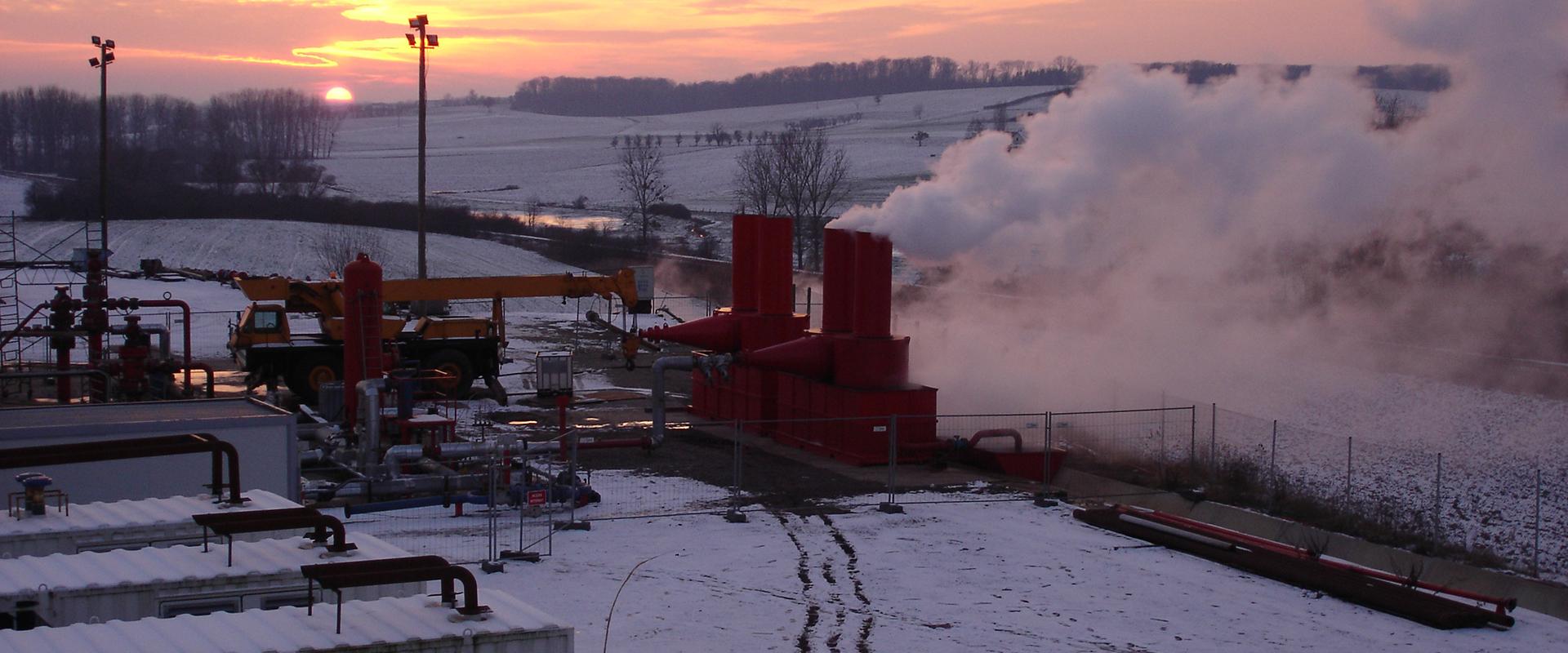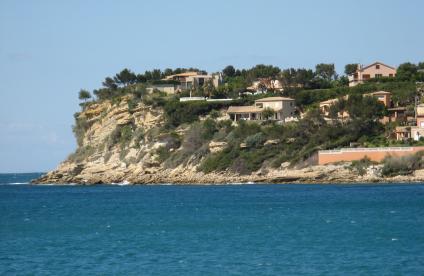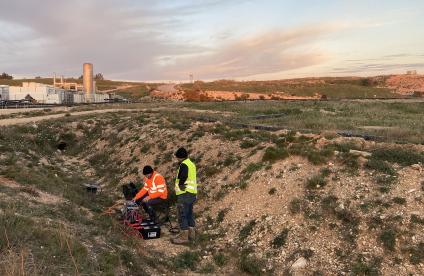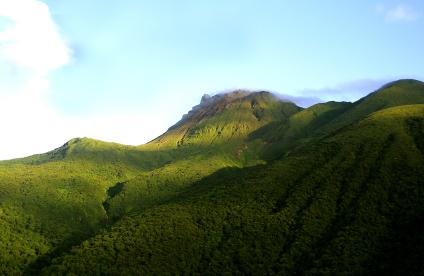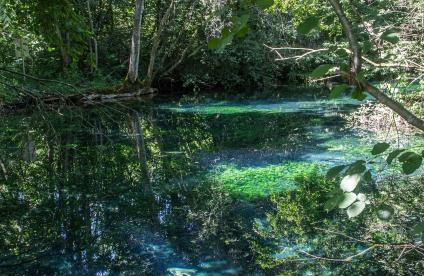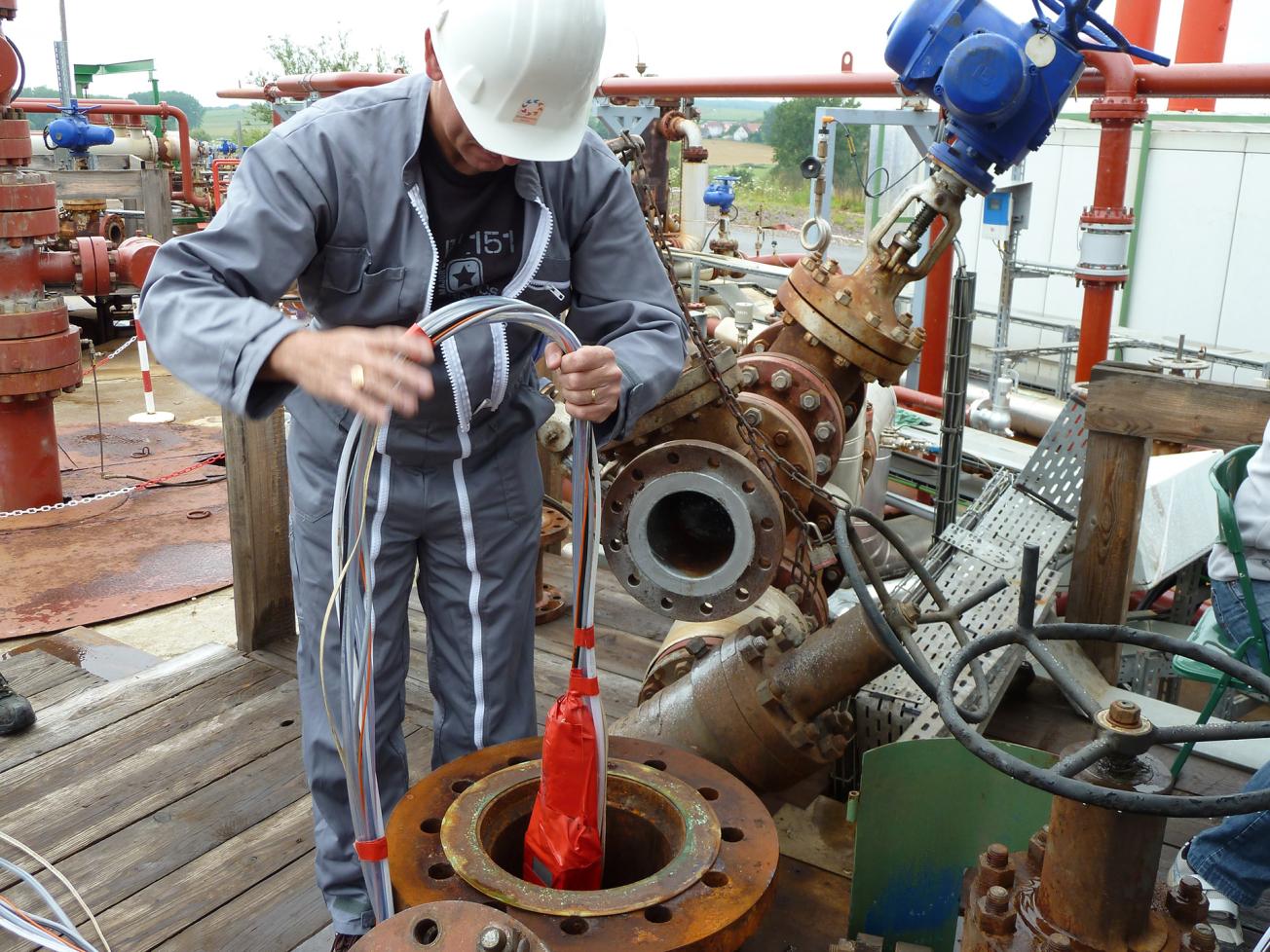
Deployment of the optical sensor at the deep geothermal pilot site at Soultz-sous-Forêts (NE France).
© BRGM
In the context of climate change, capturing CO2 and sealing it in underground reservoirs is a technique developed to reduce greenhouse gas emissions. However, it is critically important to ensure the integrity and safety of underground CO2 storage sites, through accurate and reliable surveillance systems that can quantify the CO2 injected and detect potentially dangerous leakage at an early stage.
The main difficulty lies in the fact that accurate measurements rely on the capacity to detect weak signals at great depths. While infrared measurements can detect very low concentrations of CO2, the instruments are currently limited by the fact that gas first has to be pumped to the surface, which is liable to disturb the storage context.
A scientific/technological advance
The originality of the scientific and technological approach is to have developed an optical method for in situ analyses of CO2 at concentrations from 500 ppm to 100%. The design of the sensor was possible thanks to the prior development of innovative chalcogenide glass fibre with an optical window in the mid-infrared (since CO2 has an intense absorption band extending to 4.3 μm) and an optimum signal/noise ratio.
A source of fluorescent emissions at 4.3 μm was then developed. This is made up of chalcogenide fibre doped with rare earth ions and pumped through standard silicon fibre. The advantage of this source is its much greater brilliance compared to the black body type frequently used in commercial sensors or spectrometers for these wavebands. This source is the basic component of the sensor.
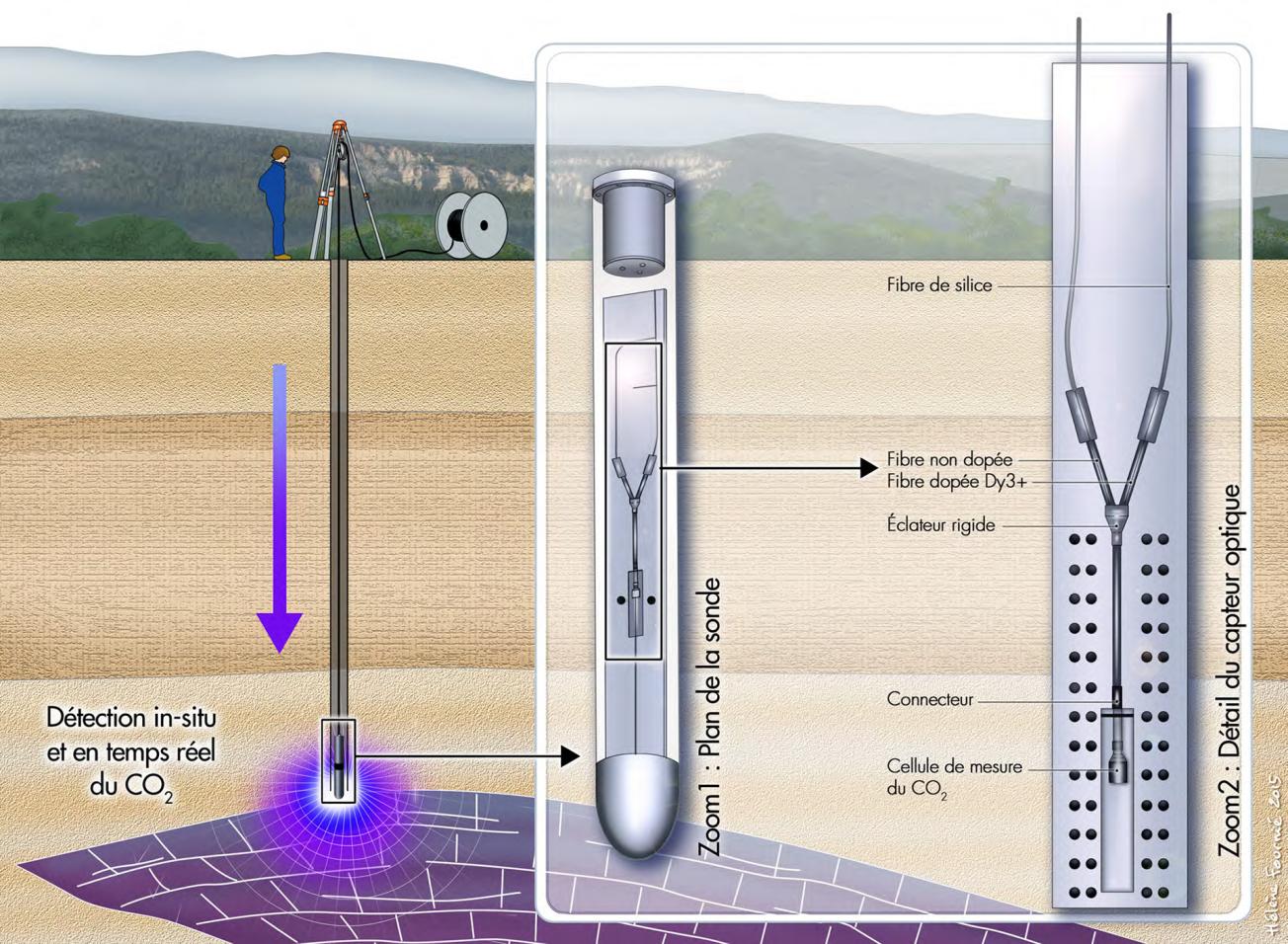
Operating principle of the optical sensor.
© BRGM - Hélène Fournié
A competitive edge for economic players
Thanks to this innovative fibre-optic sensor, real-time and continuous surveillance of potential CO2 leakage is now possible. The first industrial prototype has now been developed and the IDIL fibre-optics company, an SME, is planning to launch it on the market in 2017. A specific packaging and marketing operation for the newly designed source of fluorescence is also in the pipeline, to enhance the company's competitive edge.
Partners
The product was developed by a consortium involving the BRGM Carnot Institute, the Rennes Institute of Chemical Sciences (ISCR), and IDIL Fibres Optiques, an SME specialising in fibre optics, optoelectronics, fibre laser systems and sensors.

